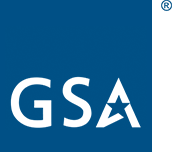Getting started with Slack
What is Slack?
Slack is a tool and chat messaging application that enables people to collaborate and interact with one another.
Slack is used at TTS as a means of daily communication and coordination. It allows us to join , external,channels — specific workspaces that bring the relevant people and information together — and directly message people or smaller groups.
You can also use a call feature within Slack called “, external,Huddles.”
How do I access Slack?
- Go to , external,TTS-only, https://gsa-tts.slack.com/ in your browser.
- Click the green button that says
Sign in with @gsa.gov email. - If you're not logged in to Google, you'll be asked to enter in your Google username. Enter in your @gsa.gov email.
- Enter in your ENT credentials into the SecureAuth Login Screens.
- You'll be directed to the , external,TTS-only, Welcome-to-TTS Slack channel.
Mac users can download the , external,desktop version. There is a , external,mobile app available through the Apple or Google store that you can download to your work iPhone or Android.
Do all TTS employees have access to Slack?
Yes! New hires are given full Slack access.
Do all TTS teams use Slack the exact same way?
No, and that’s okay! Each team develops norms and culture around how they use Slack. For example, teams may use the Huddle call feature for their daily standups; others may decide to use Slack as a text-only form of communication. Talk to your supervisor and onboarding buddy about your team’s Slack norms.
Slack is also used for “water cooler” chat and social discussions; you can review the list of , external,TTS-only, non-project Slack channels.
Is Slack content a federal record?
Yes. Everything written in Slack is potentially a federal record, just like our emails, documents, spreadsheets, video recordings, etc. The public (including media) can request copies via the Freedom of Information Act (FOIA). Assume everything you share and do in Slack could be made public and attributed back to you.
Treat Slack like the public forum it is — refrain from writing something in Slack that you wouldn't feel comfortable appearing on the news. This includes file uploads, video and audio, channel names, custom emoji, and emoji reactions.
Do not post any sensitive information.** See the list of alternatives.
How do I set up my profile?
Once you are logged into Slack, please , external,complete your Slack profile. This allows you to share who you are, what team you belong to, your pronouns, and your contact information.
-
Full Name: Your first and last name. Automatic. This will auto-populate from GSA’s Google account for you. To change your Google Name, follow these , external,TTS-only, instructions in Slack. Ex. Technolo G. Tiger
-
Display Name: The name that will display when your teammates mention you in Slack. Required. You can , external,edit your Display Name at any time. Ex. @Tee Tiger, Team Awesome, he/him/his
-
Title: Your work title. Recommended. Ex. Executive Designer of TTS Awesomeness
-
Name Pronunciation: How your name is pronounced, in the form of phonetic spellings or an audio recording. Recommended. Ex. Teck-Nah-Low-Gee | Ty-Gur
-
Time Zone: Slack displays your local time in your profile. Automatic.
-
Upload Photo: Your , external,profile photo that helps your team know who you are in Slack. Recommended.
-
Email address: Your GSA email address. Automatic. This will auto-populate from GSA Gmail.
-
Phone number: Your GSA phone number. Optional.
-
Location: Your physical location/state. Optional. Ex. Minnesota
-
Personal ReadMe - You can link to a , external,TTS-only, personal README, which is a way to tell your coworkers how they can best communicate with you, work with you, give you feedback, and support you. Optional. Ex. , external,TTS-only, TTS ReadME index
After you have edited your profile, save it and then review it. If anything changes, you can go back and edit it again.
How do I make sure I’m using Slack in line with TTS values?
Here are a few suggestions for making sure our Slack community stays an awesome, valuable and inclusive place to be.
- As stated in our Code of Conduct, TTS is committed to building a safe, welcoming, harassment-free culture for everyone. This is true on Slack, just like our other types of interactions.
- Discuss Slack team expectations with your supervisor.
- It is difficult to convey tone through text. If you have constructive feedback for someone, it might be more appropriate to share privately and via a live, synchronous method like a Meet, Zoom, or phone call.
- Be mindful of “pile-ons.” It is easy for multiple people to quickly type responses in Slack. If you see a thread that is escalating, it is a signal that a Zoom or Meet conversation may be more appropriate.
- Share your challenges and helpful resources you come across with your team/new colleagues.
- Refrain from posting anything that would make our systems vulnerable or would impact the privacy of others.
- Flag inappropriate messages. Just like our in-person interactions, there are a variety of ways to address issues: you can have a conversation directly with the person; you can discuss with a supervisor, team lead, or project lead; you can reach out to our , external,TTS-only, Workforce Relations HR Specialist.
- Ask questions in the relevant channels, and engage when people respond to you. If someone you pinged directly hasn’t responded within a few days, you may want to try contacting them using a different type of communication (email, Gchat, put time on their calendar).
- If you are unsure or unclear about any of the recommendations above, please reach out to your supervisor for assistance.

